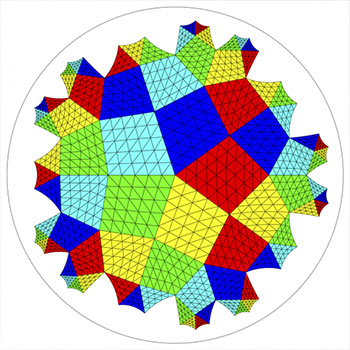1 mole nitrogen gas and 3 moles hydrogen gas form .05 moles NH3 @ equilibrium. What is Kc of the reaction?
In a sealed 1 L container. I have (NH3)^3/((N2)(H2)^3).
The answer says:
1 mole N2 and 3 moles H2, some amount x of N2 will react with 3x amount of H2 to form 2x amount of ammonia, due to stoichiometric coefficients.
The amount of ammonia at equilibrium is 0.05 M, so 2x 0.05, and x = 0.025.
*Thus [N2] at equilibrium is 1-0.025 = 0.975 M, and [H2] is 3 - 3 x 0.025 M.
Why is anything subtracted from the stoichiometric coefficients at " * "?
Thanks
In a sealed 1 L container. I have (NH3)^3/((N2)(H2)^3).
The answer says:
1 mole N2 and 3 moles H2, some amount x of N2 will react with 3x amount of H2 to form 2x amount of ammonia, due to stoichiometric coefficients.
The amount of ammonia at equilibrium is 0.05 M, so 2x 0.05, and x = 0.025.
*Thus [N2] at equilibrium is 1-0.025 = 0.975 M, and [H2] is 3 - 3 x 0.025 M.
Why is anything subtracted from the stoichiometric coefficients at " * "?
Thanks
1 Answer
Explanation:
The easiest method to organize all the information they are throwing at you is to separate all the parts into an initial, change, and equilibrium box (or ICE box). You want to first write out your chemical equation and balance it out.
(unbalanced)
(balanced)
Since Kc uses the concentrations of the substances, you want to divide all the moles given by the volume to give you molarity. Then organize all your given information and the inferred information to the table. The initial concentrations are
(The commas are for spacing in the box)
,,,,,,,,,,,,,,,,
Initial,,,,,,,1,,,,,,,,,,,3,,,,,,,,,,,,,,,,,,,,0
Change,-x,,,,,,,,-3x,,,,,,,,,,,,,,,,+2x
Equil.,,,,,1-x,,,,,,,3-3x,,,,,,,,,,,,+0.05
The change is the amount of reactants used to produce the products. In our chemical formula, we can infer that for every mole of
This is why we subtract x from the reactants and add x to the products (in their specified ratios from the stoichiometric coefficients). Essentially with our ICE box, the equilibrium is equal to the initial plus the change (making sure we have the right change for the reactants and products since they will be opposite in sign).
Since the concentration of
Then after solving for x (
,,,,,,,,,,,,,,,,,,,,,,
Equil.,,,,,1-(0.025),,,3-3(0.025),,,,,,,,,,,,+0.05
,,,,,,,,,,,,,,,,
Equil.,,,,,0.975,,,,,,2.925,,,,,,,,,,,,0.05
We can then write our rate quotient/equilibrium constant (

